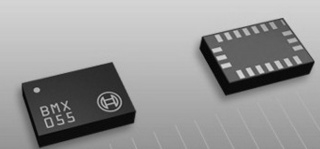What are the main application areas of MEMS sensors?

1, medical
MEMS sensor is applied to non-invasive fetal heart rate detection. It is a very technical job to detect fetal heart rate. Because the fetal heart rate is very fast, between 20 and 160 times per minute, with traditional stethoscope or even ultrasound Doppler with amplification. It is difficult to measure accurately with manual counting. Ultrasound Doppler fetal heart rate monitors with digital display are expensive and are used only in a few large hospitals. In addition, the ultrasonic vibration wave acts on the fetus, which has a great adverse effect on the fetus. Although the detection dose is very low, it is also a lossy detection category and is not suitable for regular, repetitive inspections and home use.
Based on VTI's MEMS accelerometer, a non-invasive fetal heart rate detection method was developed to develop a simple, easy-to-learn, intuitive and accurate clinical diagnosis between the fetal heart stethoscope and the Doppler fetal monitor auxiliary instrument. The fetal heart rate is converted into an analog voltage signal by an acceleration sensor, and the difference is amplified by an instrument amplifier for preamplification. Then, a series of intermediate signal processing such as filtering is performed, and the analog voltage signal is converted into a digital signal by an A/D converter. The optical isolation device is input to the single chip microcomputer for analysis and processing, and finally the processing result is output.
The fetal heart rate monitor based on the MEMS accelerometer design can be used as a terminal to make a remote fetal heart rate monitoring system. The central signal collection and analysis monitoring host at the hospital side gives the automatic analysis result, and the doctor diagnoses the result. If there is any problem, the pregnant woman is notified to the hospital in time. This technology is beneficial for pregnant women to check the condition of the fetus at any time, which is conducive to the health of the fetus and pregnant women.
2, car
MEMS pressure sensors are mainly used to measure airbag pressure, fuel pressure, engine oil pressure, intake line pressure and tire pressure. The sensor uses single crystal silicon as a material to form a force sensitive diaphragm in the middle of the material by MEMS technology, and then diffuses impurities on the diaphragm to form four strain resistors, and then connects the strain resistors into a Wheatstone bridge. Circuitry to achieve high sensitivity. Automotive MEMS pressure sensors are available in several common forms such as capacitive, piezoresistive, differential transformer, and surface acoustic wave.
The principle of MEMS accelerometer is based on Newton's classical mechanics law. It is usually composed of suspension system and detection quality. The acceleration is detected by the offset of micro silicon mass. It is mainly used in automotive airbag systems, anti-skid systems, and car navigation. In addition to capacitive and piezoresistive systems, MEMS accelerometers include piezoelectric, tunneling current, resonant, and thermocouple types. Among them, the capacitive MEMS accelerometer has the characteristics of high sensitivity and minimal temperature influence, and is the mainstream product in MEMS micro accelerometer.
The microgyroscope is an angular rate sensor, which is mainly used for GPS signal compensation and automobile chassis control systems for car navigation, mainly including vibrating type and rotor type. The most widely used is a vibratory gyroscope that senses the angular velocity by using the Coriolis effect generated by the vibration mass of single crystal silicon or polycrystalline silicon when it is rotated by the susceptor. For example, when the car is turning, the system measures the angular velocity through the gyroscope to indicate whether the rotation of the steering wheel is in place, and actively applies appropriate braking on the inner or outer wheels to prevent the car from getting out of the lane. Usually, it forms active control together with the low accelerometer system.
3, motion tracking
In the daily training of athletes, MEMS sensors can be used to measure 3D human motion, record each action, and the coaches analyze the results and compare them repeatedly to improve the athletes' performance. With the further development of MEMS technology, the price of MEMS sensors will also decrease, which can be widely used in the Volkswagen gym..
In terms of skiing, pressure sensors, accelerometers, gyroscopes and GPS in 3D motion tracking allow users to obtain extremely accurate viewing capabilities. In addition to providing snowboard movement data, they can also record the user's position and distance. The same is true for surfing. The 3D motion tracking installed on the surfboard records information such as sea level, speed, surfing time, paddle distance, water temperature and calories burned.
4, mobile phone photo
Before the advent of MEMS Drive, the mobile phone camera was mainly operated by the voice coil motor to move the lens group to achieve anti-shake (referred to as the lens anti-shake technology), which was greatly limited. Another high-end anti-shake technology in the market: multi-axis anti-shake, the use of mobile image sensor to compensate for jitter, but because of the huge size of this technology, power consumption exceeds the mobile phone load, has been unable to on the phone application.

